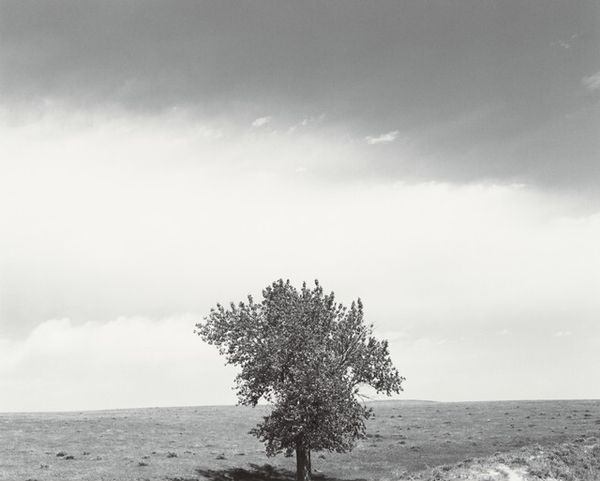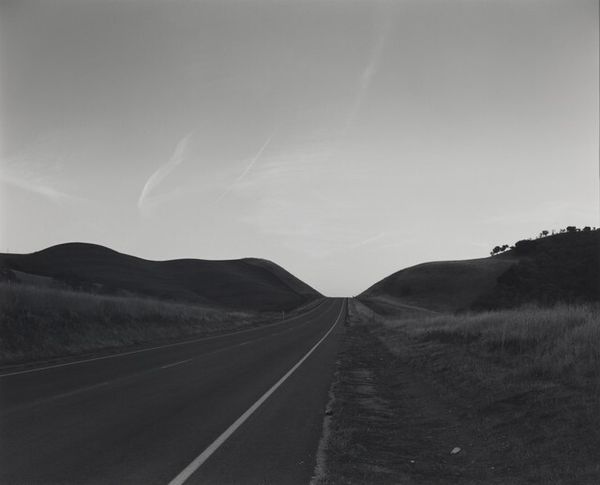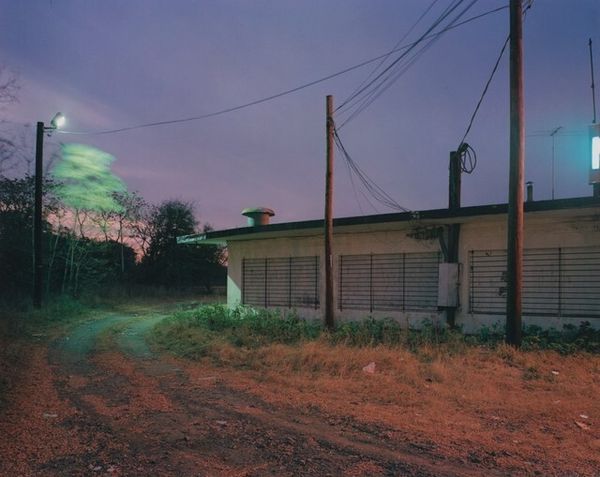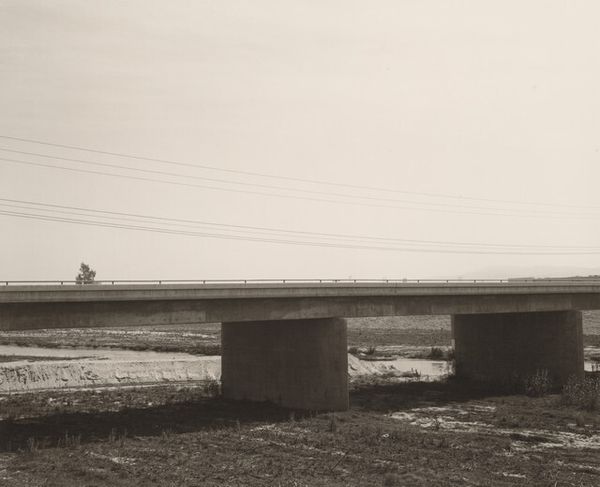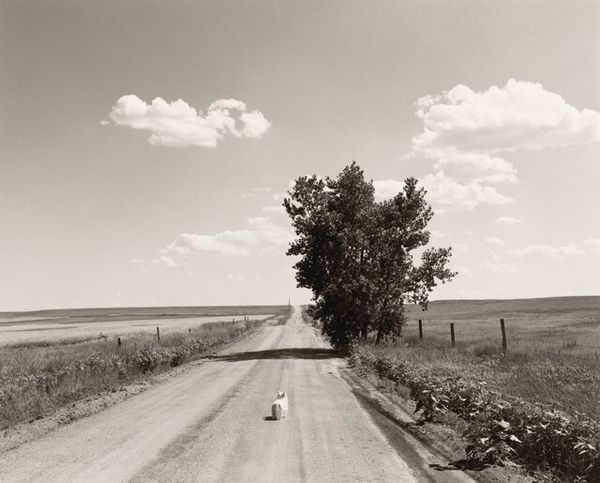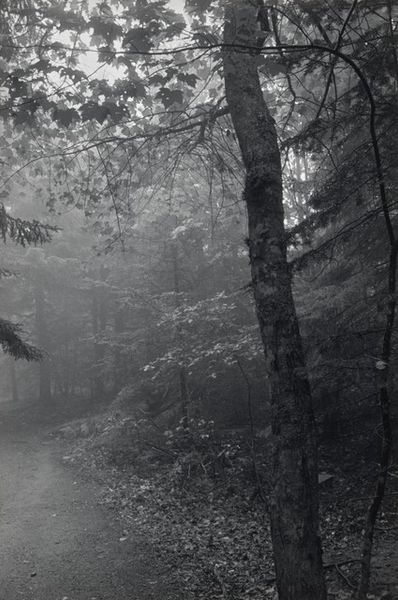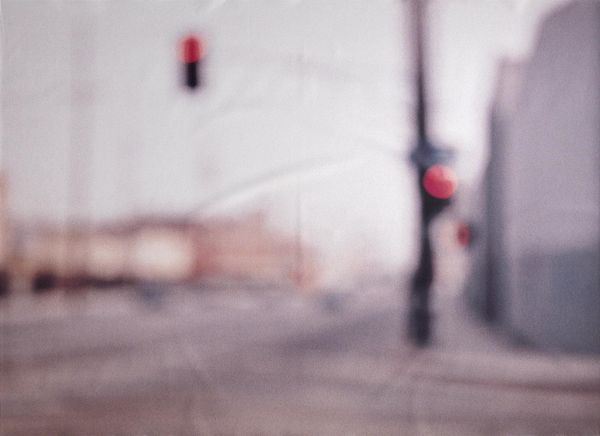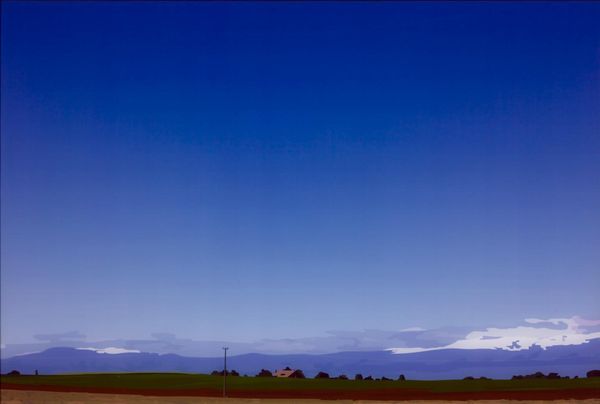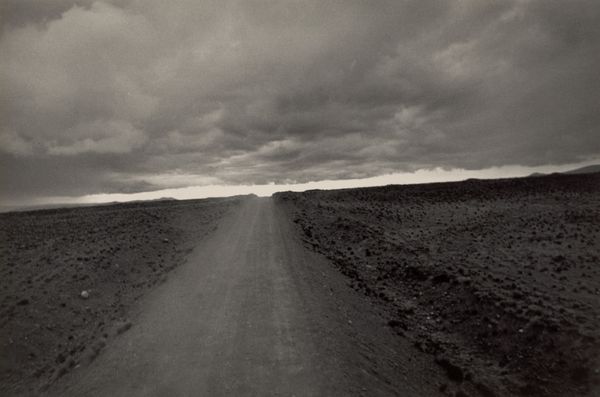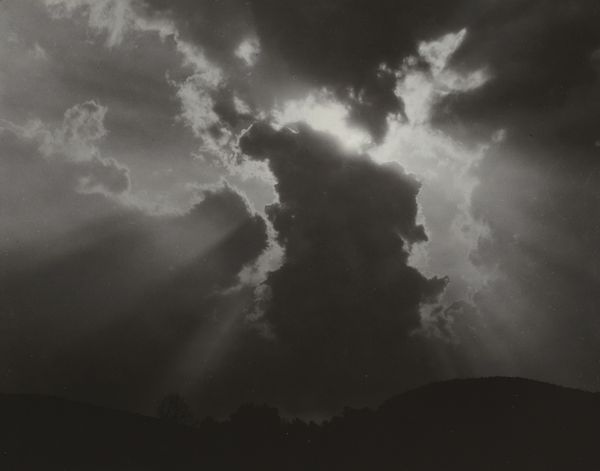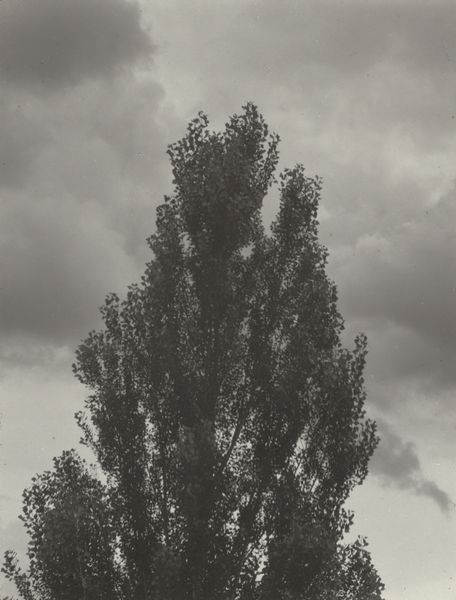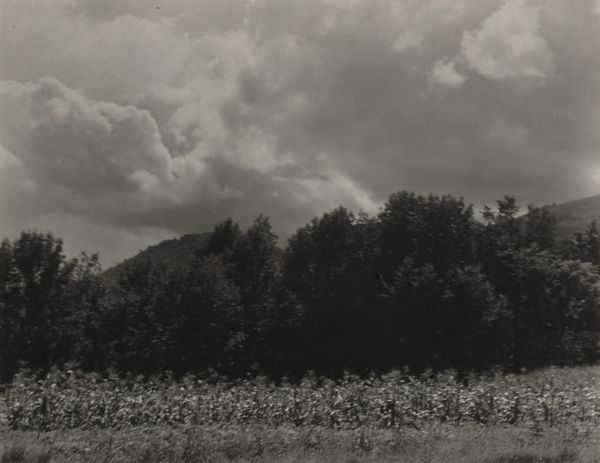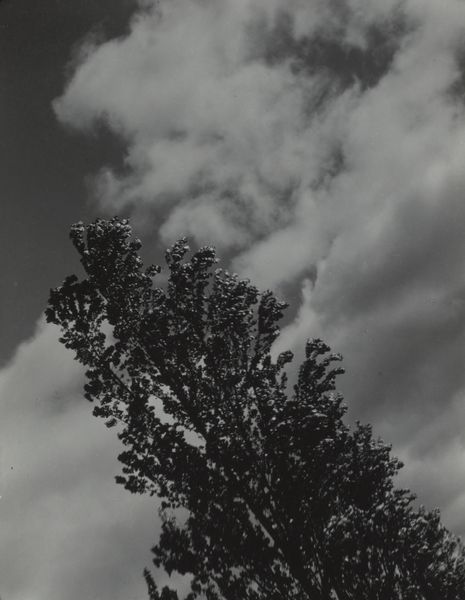
plein-air, photography
countryside
plein-air
landscape
photography
road
geometric
realism
Dimensions: image: 36.2 × 45.5 cm (14 1/4 × 17 15/16 in.) sheet: 40.7 × 50.8 cm (16 × 20 in.)
Copyright: National Gallery of Art: CC0 1.0
Curator: Joe Maloney’s photograph, “Delaware,” possibly taken between 1979 and 1982, offers a captivating view. Editor: My initial impression is one of stillness and liminality. The rainbow is almost too perfect, juxtaposed with the mundane presence of the car on the road. It’s a strangely beautiful tableau. Curator: Indeed. This image invites a reading of rural American life. The solitary car suggests mobility but also a kind of isolation. Consider the socio-economic narratives implicit in this setting— the open road as a symbol of freedom versus the realities of infrastructural development, rural decline, and perhaps even suburban sprawl encroaching on the countryside. Editor: From a purely formal perspective, observe how Maloney uses the geometric lines – the road, the telephone poles – to divide the frame, creating a strong sense of perspective and leading the eye toward the distant horizon. The muted palette enhances the photograph's tranquil mood. And that almost perfect double rainbow—a dazzling arc! It is contrasted sharply with the practical utility of a car parked beside what is probably a fairly common road. The way the wet road reflects light emphasizes surface texture and luminosity. Curator: Yes, but those rainbows, framed by utility poles, are also suggestive of broken promises in a society built on endless expansion and technological advancement, but not equally shared among all its members. How can one feel hope for future equity while also literally standing at the margin? It also recalls feminist readings of landscape photography—who gets to represent and own what is natural? Editor: Perhaps the contrast between the "natural" and "man-made" serves to further showcase both! Both coexisting and competing for dominance of the visible spectrum. Curator: Possibly. To me the photograph offers a space for considering narratives about belonging and displacement, hope and disillusionment within the complex tapestry of rural American life during a specific time of transformation. Editor: I see it also as an investigation of the potential beauty residing in everyday landscapes and geometric structure and organization. Curator: Well, regardless, the photo gives us much to consider and to ponder in connection to our own place within this narrative. Editor: Precisely. A rewarding piece!
Comments
No comments
Be the first to comment and join the conversation on the ultimate creative platform.
